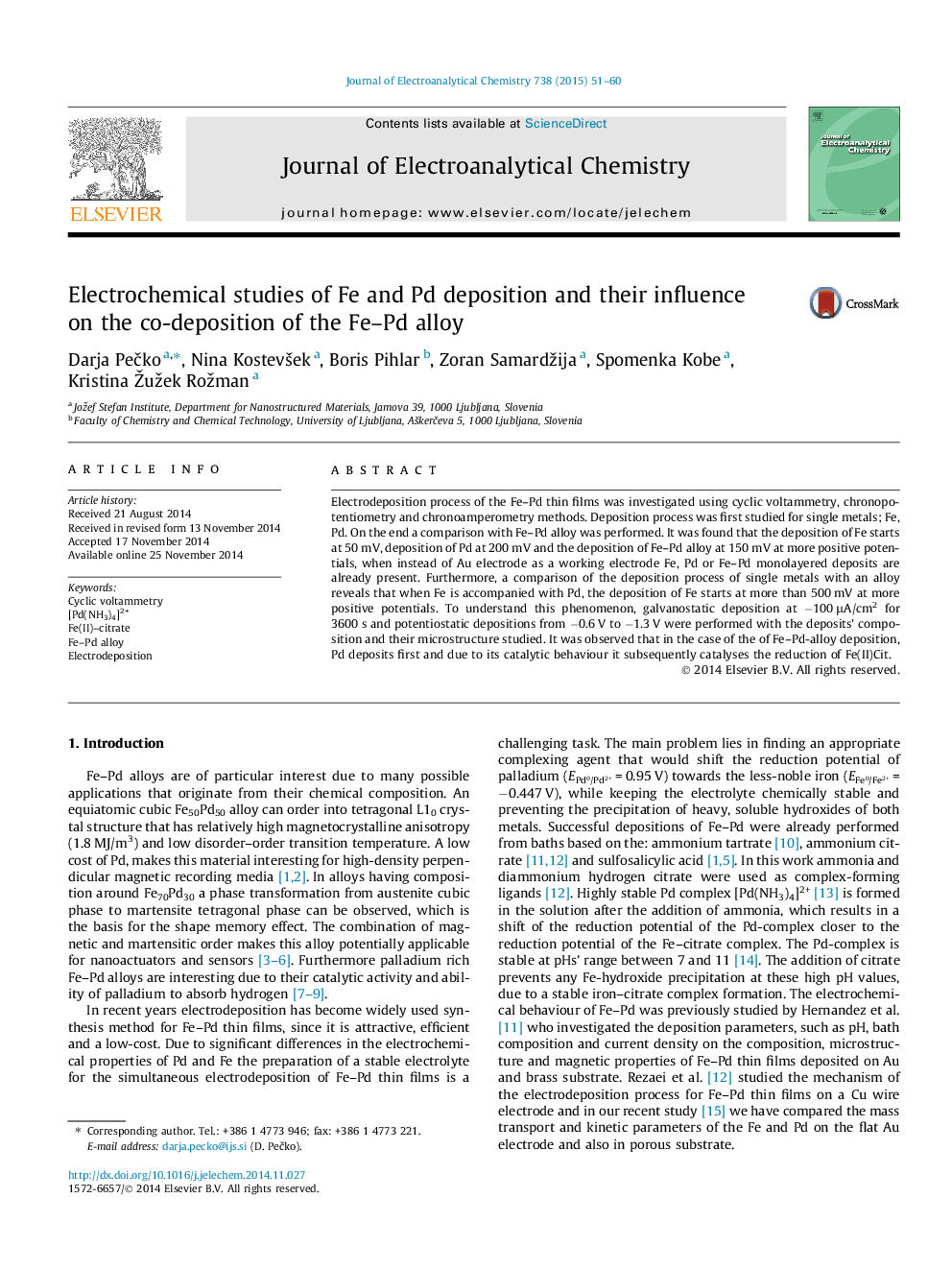| کد مقاله | کد نشریه | سال انتشار | مقاله انگلیسی | نسخه تمام متن |
|---|---|---|---|---|
| 218570 | 463207 | 2015 | 10 صفحه PDF | دانلود رایگان |

• With cycling Fe, Pd and FePd reduction proceeds at more positive potentials.
• Fe, Pd and FePds’ reduction potentials are shifted for +50 mV, +200 mV and +150 mV.
• Fe(II) → Fe from Fe–Pd electrolyte starts at +500 mV due to catalytic effect of Pd.
• FePd alloy deposits at −0.6 V, thus the hydrogen evolution can be avoided.
Electrodeposition process of the Fe–Pd thin films was investigated using cyclic voltammetry, chronopotentiometry and chronoamperometry methods. Deposition process was first studied for single metals; Fe, Pd. On the end a comparison with Fe–Pd alloy was performed. It was found that the deposition of Fe starts at 50 mV, deposition of Pd at 200 mV and the deposition of Fe–Pd alloy at 150 mV at more positive potentials, when instead of Au electrode as a working electrode Fe, Pd or Fe–Pd monolayered deposits are already present. Furthermore, a comparison of the deposition process of single metals with an alloy reveals that when Fe is accompanied with Pd, the deposition of Fe starts at more than 500 mV at more positive potentials. To understand this phenomenon, galvanostatic deposition at −100 μA/cm2 for 3600 s and potentiostatic depositions from −0.6 V to −1.3 V were performed with the deposits’ composition and their microstructure studied. It was observed that in the case of the of Fe–Pd-alloy deposition, Pd deposits first and due to its catalytic behaviour it subsequently catalyses the reduction of Fe(II)Cit.
Journal: Journal of Electroanalytical Chemistry - Volume 738, 1 February 2015, Pages 51–60